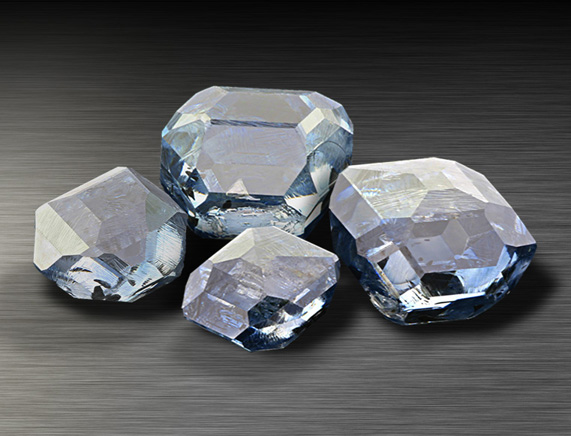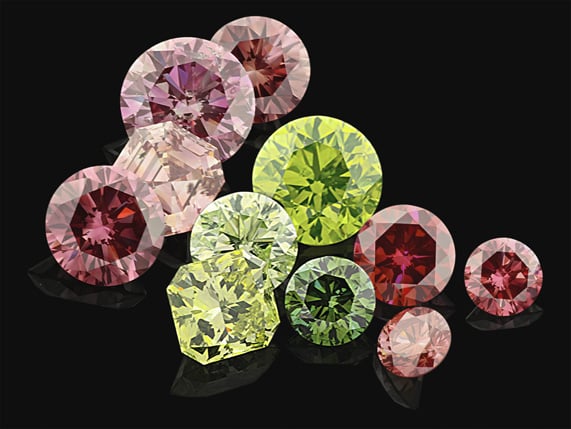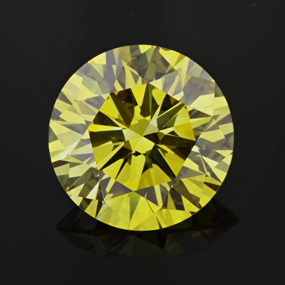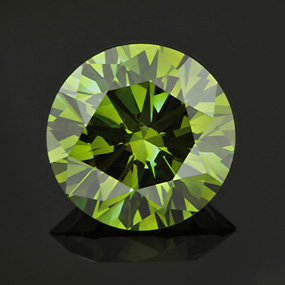How Are Diamonds Made? Natural vs Lab-Created Explained
Two Paths, One Diamond Not all diamonds come from the same place — but they all start the same way. Pure carbon, crystalized under immense pressure and heat. Whether it…
Aside from untreated mined diamonds, there are a few alternatives:

Rough synthetic blue diamonds grown by HPHT
Real diamonds were first grown in a machine by GE and ASEA in the 1950’s and have been the main source for industrial abrasive diamonds for many years. Jewelry quality synthetic diamonds in fancy colors have only been around commercially since the mid-2000s and colorless synthetic diamonds since the early-2010s. Diamonds can be grown through a high-pressure high-temperature (HPHT) growth process which resembles the heat and pressure found deep in the earth, or through a chemical vapor deposition (CVD) process which uses plasma gas in a vacuum chamber. Both of these processes grow real diamonds, though grading labs can still identify their laboratory origin. Commonly accepted terms include: synthetic, lab-grown, lab-created, or man-made, immediately preceding the word “diamond.”
The HPHT process can grow yellow, orange, blue and colorless diamonds, while CVD primarily grows brown and near-colorless diamonds. Synthetic diamonds are relatively expensive to grow, with essentially identical costs as mined diamonds for polishing and grading, which puts their retail prices in the “thousands of dollars per carat,” depending on color and quality.
Some people buy synthetic diamonds for environmental or conflict-free reasons, though this does divert money from supporting developing mining nations in Africa. Canadian, Australian, or Russian-mined diamonds can similarly be conflict-free, without supporting these developing regions.
*To learn more, visit the Pricescope Journal article on Synthetic Diamonds

HPHT-grown diamonds that have been irradiated and annealed
Diamonds come out of the ground in a variety of colors and qualities, many of which can be less desirable for jewelry purposes. Off-white, yellow, brown and other colors can sometimes be treated to change or improve their color. A high-pressure high-temperature treatment process can be used to remove (whiten) or alter a diamond’s color. Irradiation bombards a diamond with ions, altering the crystal lattice and changing the diamond’s color. A foil-like coating can also be applied to a diamond’s pavilion, giving it the appearance of a different color. Through various treatments, it is possible to make diamonds colorless, yellow, orange, green, pink, red, or teal-blue.


Images above show the same 0.77-carat HPHT-grown fancy intense yellow diamond prior to irradiation and annealing (left) and after (right)
Many CVD synthetic diamonds are grown brown or off-white and must be HPHT color treated to turn them near-colorless. HPHT yellow synthetic diamonds can be irradiated to turn them into other colors like pink, red, and green.
Lower clarity diamonds can be improved through laser drilling or fracture filling. Microscopic holes are drilled into a diamond, providing access to an inclusion. Certain types of inclusions can then be dissolved in acid and the vacancy replaced with a glass filling.
These treatment processes usually produce a diamond with lower value than a comparable untreated mined diamond, however still make a diamond that is more attractive and valuable than in its untreated state. These treatment processes vary in their permanence. Some, like foil, can come off in an ultrasonic cleaner, while others, like fracture filling, can become unstable with the heat of a jeweler’s torch. If you are buying a treated diamond, it is important to know what, if any, precautions you need to take to preserve the treatment.
Diamond imitations have been around for thousands of years. Anything that may resemble a diamond, but does not possess all the same properties as a diamond, is considered a simulant. Common simulants include cubic zirconia (CZ), moissanite, white sapphire, and YAG, though others certainly exist and more will probably come out in the future. These simulants usually cost a couple dollars to a couple hundred dollars per carat and can easily be identified by most jewelers. They are a less expensive alternative to a diamond, but are generally not as durable and should be fully disclosed when purchasing. Take note, some companies sell simulants with confusing or misleading terminology, leading one to believe they are buying a synthetic diamond instead. There are also companies that claim to coat simulants like CZ with a layer of diamond. To date none of these simulants have passed gemological hardness or durability testing.
by Eric Franklin, President of D.NEA
Discuss on the Forum
Investment »